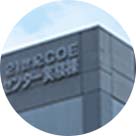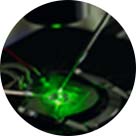Theory building and practical application of co-creative design thinking approach originating from Asia
Objective
The purpose of this research division is to develop a methodology for design thinking that incorporates unique Asian perspectives and cultural characteristics to address various “wicked problems” in Asia (especially Japan), rather than merely importing American or European design thinking methodologies.
To achieve this, it is essential to start by examining and organizing what constitutes “Japanese/Asian problems” and “Japanese/Asian approaches.” This requires conducting research that integrates social science and engineering approaches and fostering collaboration with various international research centers in the Asian region.
Researchers from two newly established departments at our university, which aim to lead education and research based on domestic design thinking, are at the core of this effort. They have already initiated various collaborations with international research institutions and researchers, and they plan to further deepen these partnerships to construct a “design thinking methodology originating from Asia” and actively disseminate the results both domestically and internationally.

Figure: The positioning of this research division
Academic collaboration with SUTD
As one of the core activities of this research division, we will work closely with Singapore University of Technology and Design (SUTD), which is currently serving as a hub for design research in Asia and actively promoting various research activities. While advancing various joint research projects, we plan to co-host an international symposium within the established period of this research division.

Research Areas
This research division will conduct research in the following four areas:
[Theory] Development of Asian Design Thinking Methodologies
We aim to develop a new design thinking methodology originating from Asia, which is neither American nor European. This will be achieved by critically reviewing American and European design thinking methodologies and closely collaborating with external research institutions in the Asian region.
[Application 1] Service Design
We will explore the design thinking methodologies required for developing various services and businesses for individuals and groups, and examine the effectiveness of specific problem-solving strategies. We will particularly focus on: a) healthcare (patient communication), b) DX (digital transformation) solutions, and c) educational services.
[Application 2] Product and Environmental Design
We will examine the effectiveness of approaches for creating innovation through the development and introduction of products that support activities of people and organizations in local communities and office spaces as places for human collaboration.
[Application 3] Policy and Ecosystem Design
We will evaluate the effectiveness of design thinking as a methodology for constructing and improving the processes and policies of consensus building and decision making necessary for collaborative innovation. Special attention will be given to entrepreneurship and governmental policy issues.









